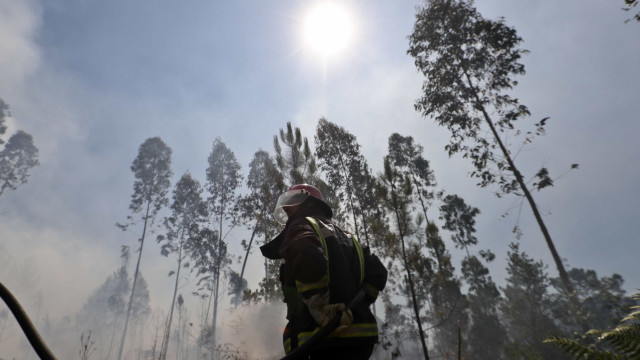Rural fires burned almost 9,000 hectares (ha) in the first six months of the year, 40% less than the average for this period, according to provisional data from the Institute for Nature Conservation and Forests (ICNF).
The most frequent and already established causes of the 3,969 rural fires were burning and slash-and-burn, accounting for 60%.
According to ICNF’s first report of the year, the fires resulted in 8,869 ha of burnt area, between settlements (2,607 ha), scrubland (5,833 ha) and agriculture (429 ha).
“Comparing the figures for the year 2022 with the history of the previous 10 years, it is noted that there were 15% fewer rural fires and 40% less burned area compared to the annual average for the period”, according to the document.
The year 2023 presents, until June 30, the 5th lowest value in number of fires and the 6th highest value of burned area, since 2013.
In the first half of the year, fires with a burned area of less than one hectare were the most frequent, accounting for 80% of the total.
As for larger fires (those with a burned area equal to or greater than 100 hectares), ICNF highlights the occurrence of 11 fires, which destroyed between 100 and 1,000 hectares, representing about 22% of the total burned area.
The highest number of fires was recorded in the districts of Porto (690), Braga (447) and Viana do Castelo (391).
The most affected district, in terms of burned area, was Braga with 2,383 hectares, about 27% of the total burned area, followed by Vila Real with 1,761 hectares (20% of the total) and Viana do Castelo with 1,430 hectares (16% of the total).
“The counties with the highest number of fires are all located north of the Tagus, and are characterized by high population density, the presence of large urban agglomerations or traditional use of fire in agroforestry management,” the report said.
Of the total of 3,969 rural fires that have already occurred this year, 3,069 have been investigated and have the process of ascertaining causes completed (77% of the total number of fires – responsible for 94% of the total area burned).
Of these, the investigation allowed the attribution of a cause for 2,303 fires (75% of the fires investigated, responsible for 84% of the total burnt area).
By June 30, the most frequent causes in 2023 are: burning of forest or agricultural waste (23%) and burning for livestock grazing management (19%).
Together, the various types of burning and slash-and-burn represent 60% of the total causes.
According to the ICNF, reignitions represent 3% of the total causes found, a lower figure than the average of the previous 10 years.








